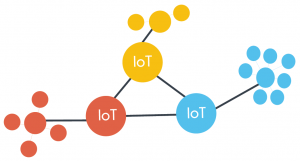 Currently more and more resources are accessible to be exploited by entrepreneurs, start-ups, and companies, or everyone who is interested in adding value over IoT devices. However, the range of protocols and the way to describe and share resources with other organisations is currently complex and time consuming, which is one of the major problems platform providers are currently facing. The symbIoTe project aims to provide the necessary tools and foundations to reduce this gap by introducing its interoperability layer L1 which focuses on semantic interoperability. Resources are described homogeneously, based on semantic definitions and accessed in a consistent way by various IoT applications.
Currently more and more resources are accessible to be exploited by entrepreneurs, start-ups, and companies, or everyone who is interested in adding value over IoT devices. However, the range of protocols and the way to describe and share resources with other organisations is currently complex and time consuming, which is one of the major problems platform providers are currently facing. The symbIoTe project aims to provide the necessary tools and foundations to reduce this gap by introducing its interoperability layer L1 which focuses on semantic interoperability. Resources are described homogeneously, based on semantic definitions and accessed in a consistent way by various IoT applications.
However, symbIoTe goes a step further to enable closer collaboration between IoT platforms by introducing the IoT federation layer (L2), which directly enables resource exchange among platforms within a federation.
Through this new layer, symbIoTe targets the next natural step of interoperability. Specifically, the goal is to operate and maintain resources of different platforms in a homogeneous and unified way; allowing access with the same credentials from one platform to another, searching for resources of federated platforms as if they were your own ones, introducing security policies of the resources, allowing bartering between platforms resources and still facilitating the needed trust and reputation. This scenario requires the introduction of an IoT federation solution, where the platforms have the necessary mechanisms to validate the quality of the shared services and the policy of security with each other for sharing resources. This allows creating more interesting and complex relationships between the platforms, not all the resource will be accessible by free and the federation will provide the necessary mechanisms, such as the introduction of coupons, to manage the bartering of resources in order to set up actual business connections.
These federation scenarios are not only useful at operation level between platforms to share resources; moreover they are essential for the creation of actual flexible ecosystems where the resources can be exploited by the stakeholders of the different platforms. Although at first glance the solution could be only aligned for platforms at the same scope, this approach can be applied for heterogeneous domains as shown by the following examples. In fact, the compliance of the interoperability of L1 and the federation of L2 allows for more possibility to create added value for their offering, and find new interested parties.
The symbIoTe federation mechanisms will pave the way to new and broader business opportunities by enhancing the current platform solution space either in the same or even other domains:
- Federation of Universities: There are two universities that have a current collaboration to interchange students and knowledge; however, they cannot achieve complete teamwork when they want to use the resources without duplicating accounts and grants. Hence, the introduction of the federation will allow control of the quality of service for the shared resources and reduce the bureaucratic management of user access. Moreover, the solution is not closed, allowing new universities to be incorporated in a simple and homogeneous manner. What started with a simple collaboration could end with the creation of a heterogeneous ecosystem of platforms.
- Federation of Sensor Platforms: The opportunity to federate different kinds of platforms permits the creation of added value. Imagine that a platform with pollution sensors has created some native applications to employ these data, and they want to improve the functionalities to include more data sensors. However, the platform cannot include them for the moment for several reasons, as it requires additional knowledge and investment. On the other side, another platform with noise sensors is also interested to analyze the correlation of the noise and pollution in the city, but they don’t want to deploy pollution sensors since they are out of reach. Both platforms decide to be federated providing and consuming resources of both platforms in a transparent way. Moreover, they will be independent since the definition of the resource is homogenous and new platforms could be part of the existing federation, allowing the use of resources from different domains, without worrying about their integration.
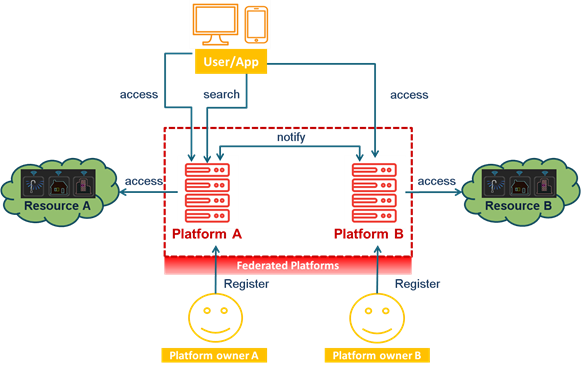
 In both scenarios, the federation allows us to publish, discover and use resources for all federation members in the same way. Moreover, the federation promotes the current trend of entities being both providers and consumers (= prosumers) of digital goods, i.e., IoT resources in this case. Therefore, the federation approach allows decentralizing the functionalities in order to introduce the prosumer concept at the symbIoTe platform level.
In both scenarios, the federation allows us to publish, discover and use resources for all federation members in the same way. Moreover, the federation promotes the current trend of entities being both providers and consumers (= prosumers) of digital goods, i.e., IoT resources in this case. Therefore, the federation approach allows decentralizing the functionalities in order to introduce the prosumer concept at the symbIoTe platform level.
The platform owners, who are interested in creating an IoT Federation, need to deploy symbIoTe components within their platform’s space and interconnect them with their platforms, register the platform and create the federation with other ones. Afterwards, they may choose to share their resources freely within the federations, by guaranteeing predefined Quality of Service levels related to resource access, or by bartering them for future access to another platform’s resources. The registration of federated resources happens without a central registry and access is granted directly from platforms to applications without any kind of intermediary or centralized registry at the federation level. Besides, through different monitoring levels such as monitor proves (resource health metrics and access statistics) and anomaly detectors, the solution is able to provide enough information to follow up the Quality of Services and assign trust values to resources and platform as a whole. The following picture shows the L2 architecture and the necessary components.
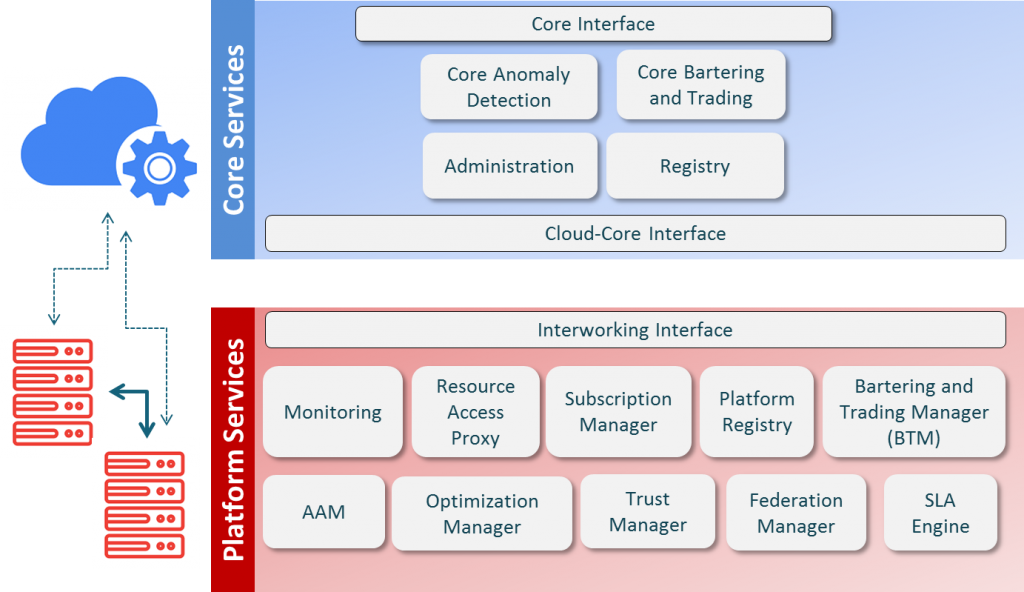
You can find a more complete description of the architecture and these components in D1.4 -Final Report on System Requirements and Architecture and D3.2 – Resource Trading, Security and Federation Mechanisms, which are published at the symbIoTe portal. The above figure includes two main domains in the symbIoTe architecture:
- Core services: The Core Domain is responsible for managing the centralized components and their functionalities. These services are hosted and maintained by the symbIoTe consortium and provide well documented APIs for interested parties. Thus, platform providers are free to use these services without any development effort.
- Platform services. The Platform Domain provides components needed for platform federation, since they are deployed on cloud level and interfacing with the native IoT platforms. Nevertheless, symbIoTe L2 provides all the documentation how to install and use them.
If this has sparked your interest and you want to improve your platforms and your ecosystems through the symbIoTe federation approach, you should look at the new symbIoTe open call for L2 compliant solutions.
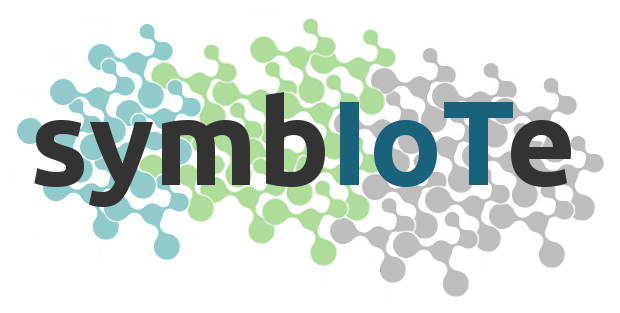
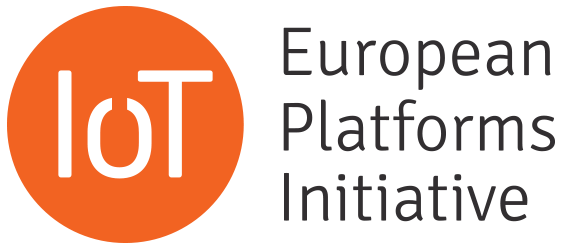
 This project has received funding from the European Union's Horizon 2020 research and innovation programme under grant agreement No 688156
This project has received funding from the European Union's Horizon 2020 research and innovation programme under grant agreement No 688156